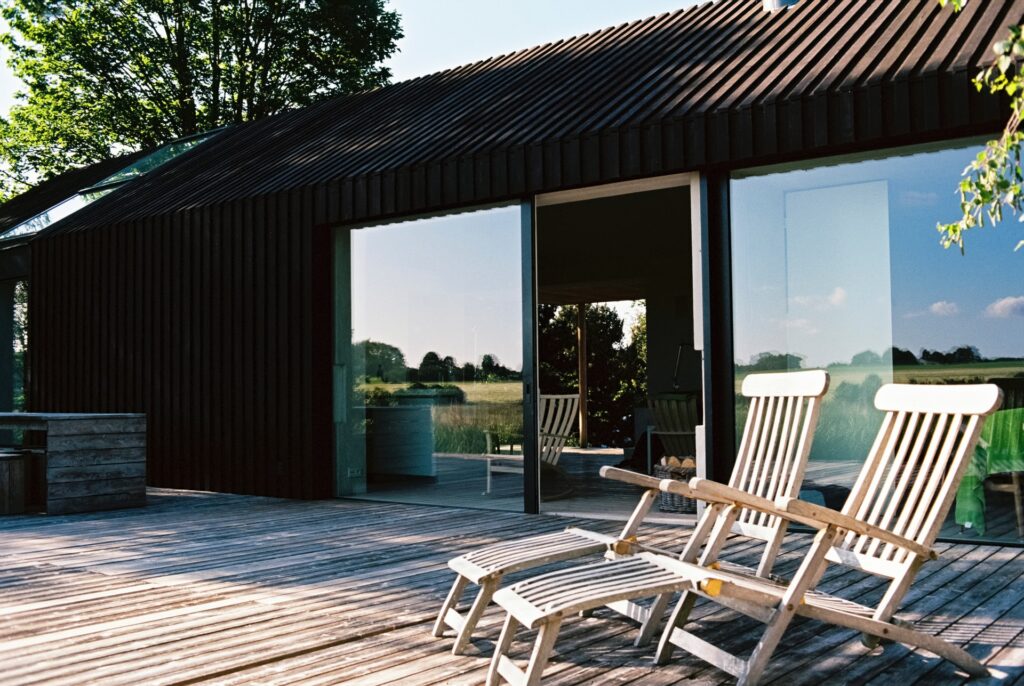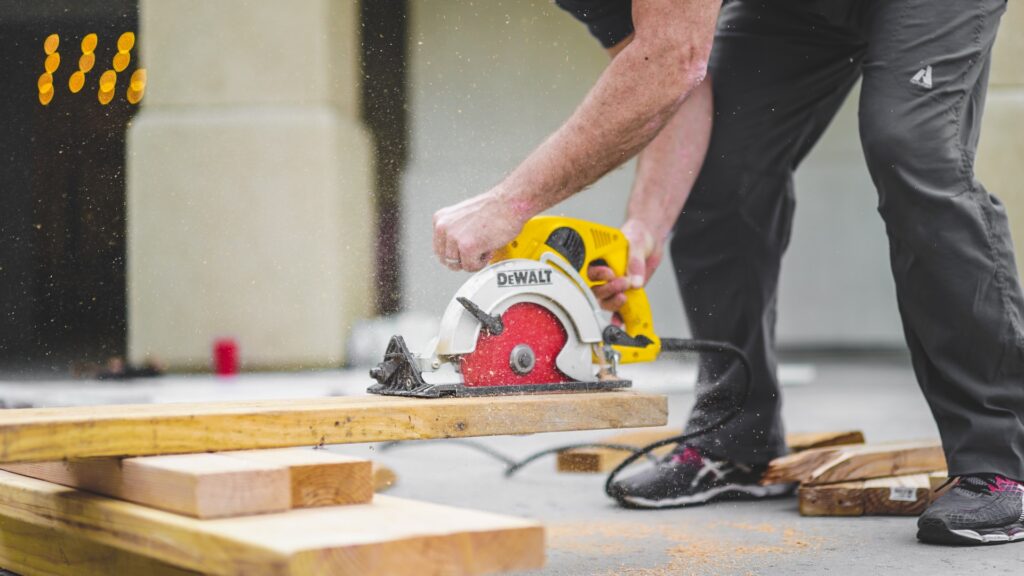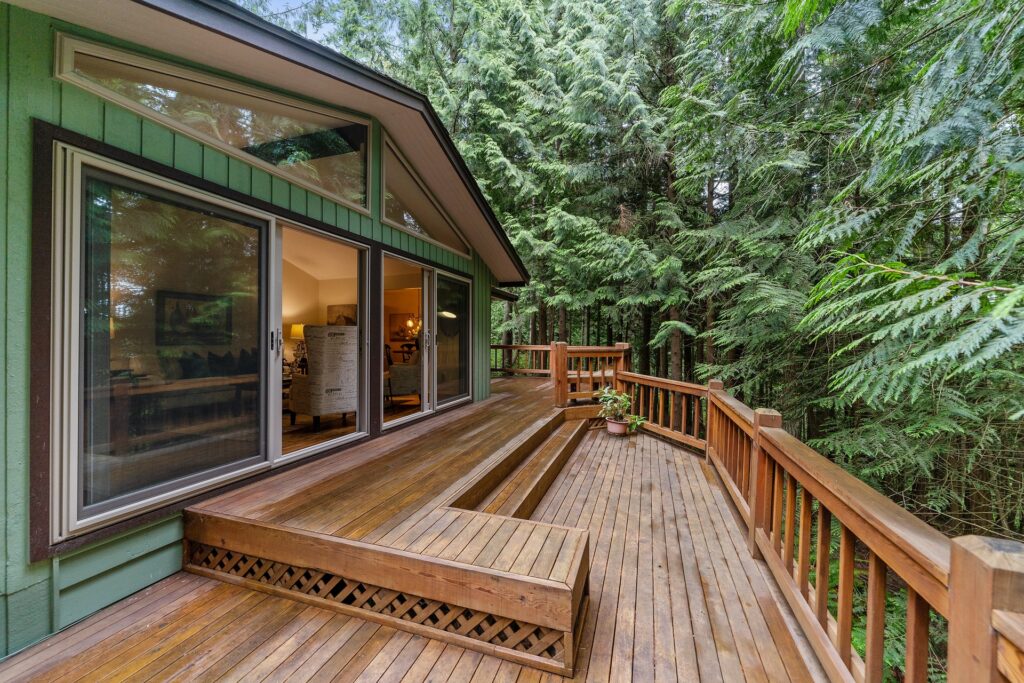
Do I Need a Permit to Build a Deck?
Making an addition or renovation to a home is a great way to increase the value of the property in question. Among the more beneficial additions to make to a home is a deck. The deck that you build can serve as a place for comfort and relaxation after a long day at work. Whether your home was initially purchased without a deck or the deck that you have is beginning to show its age, there are plenty of reasons why you might want to build a deck.
Before you get started with this type of project, it’s important that you select the right materials for the task at hand. There are a variety of different decking materials that you can use for the project, which include composite materials, natural woods, plastic, aluminum, and pressure-treated lumber. The type of material that you choose depends on what you want from your deck. If the deck isn’t going to be a major area of your home, composite materials and pressure-treated lumber can help you keep costs down. On the other hand, natural woods are fantastic for any situation and can provide your deck with a beautiful appearance.
While it’s possible for you to build the deck on your own, it’s highly recommended that you seek the services of a construction company to ensure that the finished deck is safe and secure. In many cases, a permit will be required before you’re able to construct a deck. If the deck is set to be attached to your home or is considered to be 30 inches or more above grade, a building permit will be necessary. On the other hand, these permits aren’t needed for decks that are freestanding, are lower than 200 square feet in size, and are less than 30 inches in height.
If you opt to build the deck without the assistance of a construction company, the project can take anywhere from 1-3 weeks depending on the size of the deck and the number of people working on the project. Construction companies are able to construct most decks in less than one week. In the event that you need to apply for a building permit, it’s important that you add a couple of weeks to the timeline of your project. This article takes a closer look at when a building permit is required for a deck.
Key Takeaways:
- It is an important process to obtain a permit when building a deck for both building and safety regulations.
- The 30” deck rule states if the deck is going to be 30 inches or higher from the ground a permit will be required.
- Our article explains the entire deck permitting process below!
What is the 30’’ Deck Rule?

While there are some additional factors that can dictate if a permit is needed for the deck that you want to build, likely the most important factor is the 30-inch deck rule, which states that a building permit is necessary for any deck that’s at least 30 inches or higher from the ground. This applies to the majority of decks. If the deck that you want to build is less than 30 inches off the ground, it will be considered a porch deck or patio, which means that you won’t need to go through the process of obtaining a permit.
The main reason why decks that are higher than 30 inches require a building permit is because these decks will need their own railings. When you add railings to a deck, there are some additional rules that you must adhere to before and during construction. These rules are designed to ensure the safety of everyone who uses the deck in question. If a building permit is required for the deck that you want to build, the deck must meet certain standards that are set by the city and state where you live. If you don’t follow these standards, it’s possible that you would face certain penalties. These penalties could be assessed now or when you attempt to sell your home in the future.
Who Requires a Deck Permit?

While there are some basic national guidelines that determine who requires a deck permit, it’s possible for permit guidelines to be set locally, by the city, or by the state, which can result in differing guidelines. If you live in Los Angeles, the Los Angeles Department of Building and Safety is the entity that issues building permits and works to set permit guidelines. Building permits are issued by the LADBS to ensure that certain construction projects meet local building codes. These codes have been put in place to make sure that the constructed building or deck is safe to use.
It’s also possible for cities or HOAs to regulate the addition of a deck based on how the appearance of the deck would affect the neighborhood. When you obtain a permit, you can be confident that your proposed project meets the CA building standards code, which you can find here. Every construction project that occurs in California must meet this code. The code itself dictates what materials should be used for the construction of a deck and how various aspects of the project will need to be constructed.
It’s important to take a look at the California building standards code before you apply for a building permit for your deck. The LADBS will want drawings that detail how the deck is set to be constructed. If these drawings don’t adhere to the current building code in California, you will likely be asked to make revisions to the building plan before the LADBS can approve your application and provide you with a permit, which only serves to delay the process.
What is Required When Submitting Your Deck Approval?

If you want your application for a building permit to be approved soon after it has been submitted, it’s important that you provide the LADBS with all of the necessary documents at the beginning of the process. For instance, you must provide the building department with a comprehensive drawing of the deck and the location where it’s going to be attached to your home. The reviewer of the application may also want to know where your property lines are, which is why you should attempt to provide the reviewer with scale measurements of the yard.
Along with the placement of the beams for the deck, you will also be tasked with providing the intended width, length, and height of the structure. Some other information that you may need for the application include:
- The joist thickness that you intend to use
- The spacing of the joists
- The height of the guardrails
- The location and width of the stairs
- A list of materials that you want to use
- The footing for the project, which could be deck blocks, concrete piles, or screw piles
Consider speaking to an architect if you’re unsure of how to create a drawing of the deck that meets local building standards.
What Can Happen if You Build a Deck Without a Permit

Unless your deck can legally be built without a permit because it’s lower than 30 inches to the ground or isn’t attached to your home, it’s essential that you obtain a permit. While the process of obtaining a building permit can delay the construction process, the consequences of building a deck without a permit can be severe. For one, it’s likely that your deck wouldn’t be built to code, which means that it could be unsafe for yourself or anyone else who intends to use it. Serious injuries can occur when a deck falls, which is why the structure must be built to code regulations.
When you obtain a permit, an inspector will perform a full inspection of the structure before approving it. If a safety risk is present after the deck has been constructed, the inspector should tell you how to fix the problem and make sure that the deck meets local code guidelines. If you don’t obtain a permit, some of the problems that you could run into include:
- You may be fined in certain situations
- Even if the structure is built correctly and meets local code, you may be tasked with paying back taxes on the structure
- You may be told to tear the deck down, which means that you will have wasted a significant sum of money on a project that you are unable to complete
- If someone is injured as a result of the deck falling, your insurance likely wouldn’t provide coverage, which means that you would be required to pay medical bills on your own
- It may be difficult to sell your home if unpermitted work is found on the property
Final Thoughts on Obtaining a Permit for Your Deck
When you want to obtain a permit for your deck, the approval process can take around two weeks to be completed for a residential home. Keep in mind that your application may run into problems if you don’t provide the necessary paperwork, which could delay the approval process. Building permits for decks can cost anywhere from $50-$300 depending on several different factors.
If you have already constructed the deck without obtaining a permit, it’s possible for you to avoid severe penalties by seeking a retroactive deck permit. All that’s required is for you to provide drawings of the finished deck along with any other materials that the LADBS asks for. However, you may run into problems with obtaining one of these permits. In the event that the deck was built more than five years ago, the building codes could have changed since that time, which means that your finished deck may not be up to code.
If your project only requires repairing a deck instead of replacing one, a building permit may not be needed. When repairing a deck, building permits are required if you are going to be replacing any structural components of the deck, which include the joists. If the repair work is minor, a building permit is unnecessary. When you want to place a roof over the deck, you must obtain a permit. Now that you know when a permit is necessary for constructing a deck and the types of penalties that can be assessed without a permit, you should be ready to start construction on your project.

Jason Somers, President & Founder of Crest Real Estate
With over 15 years of professional experience in the Los Angeles luxury real estate market, Jason Somers has the background, judgement and track record to provide an unparalleled level of real estate services. His widespread knowledge helps clients identify and acquire income producing properties and value-ad development opportunities.
Learn more about Jason Somers or contact us.



